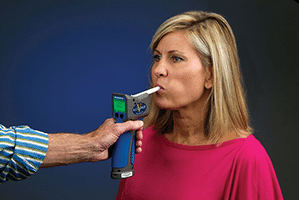How to Convert Blood Alcohol Results to Breath Alcohol Results.
In alcohol testing, it is beneficial to understand how to convert blood alcohol results to breath alcohol results. If you work in the medical field and have anything to do with alcohol testing, you will likely encounter a laboratory alcohol test result that was performed using blood. And if you are accustomed to seeing alcohol test results performed using a breath test device, you may wonder how to relate the blood test result to the breath test result.
In the United States blood test results are typically stated in either grams of alcohol per 100 milliliters of blood (g/100 mL), or milligrams of alcohol per 100 milliliters of blood (mg/100 mL). If you are up to speed on your decimals, you know that 100 mL is the same as a deciliter (dL), so the above units of measurement can also be expressed as grams of alcohol per deciliter of blood (g/dL), or as milligrams of alcohol per deciliter of blood (mg/dL).
The unit of measurement for breath alcohol test results in the U.S. is grams of alcohol per 210 liters of breath (g/210 L).
Here is a table that shows what these numbers might look like for a blood alcohol test result of .100 g/100 ml of blood, and the corresponding result stated as a breath test result.
| Blood | Breath | ||
|---|---|---|---|
| .100 | g/100 mL | .100 | g/210 L |
| .100 | g/dL | .100 | g/210 L |
| 100 | mg/100 mL | .100 | g/210 L |
| 100 | mg/dL | .100 | g/210 L |
Note that the number is the same; the only thing that changes is the decimal.
While we expect that breath test results will be very close to blood test results, we don’t expect that they will be identical. One reason is that alcohol levels are changing all the time as an individual absorbs and eliminates alcohol, and that it would be unlikely that a blood draw and a breath test would be administered within minutes of each other. But the more important reason is that the blood/breath ratio of 1:2100, upon which the g/210 L unit of measurement is based, is more likely to understate a breath test result compared to blood.
Who were these scientists that agreed to state breath alcohol test results in terms of g/210 L, and why did they choose to understate breath test results? That’s a story for another blog post.

